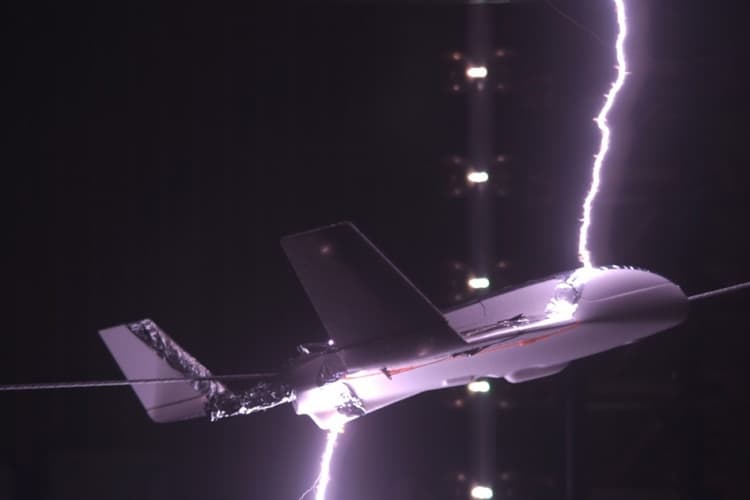Negatively charging planes could reduce mid-air lightning strikes
Research from MIT has found that negatively charging the exterior of aircraft could significantly reduce the chances of mid-air lightning strikes.

Commercial planes are struck by lightning roughly once a year, and the ensuing inspections can keep the aircraft out of service and adversely affect schedules. Prompted by Boeing – which sponsored the research – the MIT team looked for a way to counteract the polarisation that happens to aircraft when flying through ambient electric fields. As planes become increasingly polarised, they can set off a highly conductive flow of plasma called a positive leader — the preceding stage to a lightning strike.
The researchers developed a mathematical model to describe the electric field conditions under which leaders would develop, and how they would evolve to trigger a lightning strike. They applied this model to an aircraft geometry and explored whether changing the aircraft’s potential (charging it negatively) would prevent the leaders from forming and triggering a lightning strike. Their results, published in the American Institute of Aeronautics and Astronautics Journal, showed that the charged scenario required a 50 per cent higher ambient electric field to initiate a leader, compared with an uncharged scenario.
Register now to continue reading
Thanks for visiting The Engineer. You’ve now reached your monthly limit of news stories. Register for free to unlock unlimited access to all of our news coverage, as well as premium content including opinion, in-depth features and special reports.
Benefits of registering
-
In-depth insights and coverage of key emerging trends
-
Unrestricted access to special reports throughout the year
-
Daily technology news delivered straight to your inbox










National Gas receives funding to develop Gravitricity underground hydrogen storage system
There can't possibly ever be a '<i>business</i>' case for the <i><b>bulk</b></i> storage of hydrogen, since Green hydrogen electrolysis...